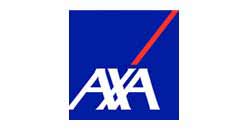
What you need to know about HMO properties:
HMO (known more elaborately as Houses in multiple occupation or houses of multiple occupancy) is a term used in property which refers to residential properties in which “common areas” (such as kitchens and bathrooms) exist and are shared by more than one tenant.
HMO’s can be divided into rooms, simple lodgings, bedsits and/or self-contained Flats.
Most houses in multiple occupation are subject to government licensing – HMO licensing was first introduced in Scotland in 2000 to ensure the safety and well-being of tenants you occupied this multi let properties. For a landlord’s property to be granted a HMO license there are certain security and safety standards to be met set out by the governing body of the properties county; standards such as presence of relevant fire doors and functioning smoke detectors to name a few.
Such was the allure and popularity of receiving multiple income streams from one property and the need to safeguard tenant’s safety, HMO schemes were introduced to other parts of the UK, though the definition of what constitutes a house of multiple occupancy differs between home nations.
Local authorities/governing bodies of the applicable districts have the authority to vary the conditions of the licence and costing – failure to comply with the regulations set out by the respective licensing authority will not only leave the property owner having to pay a heavy fine, but not complying with a HMO license also constitutes as a criminal offense.




